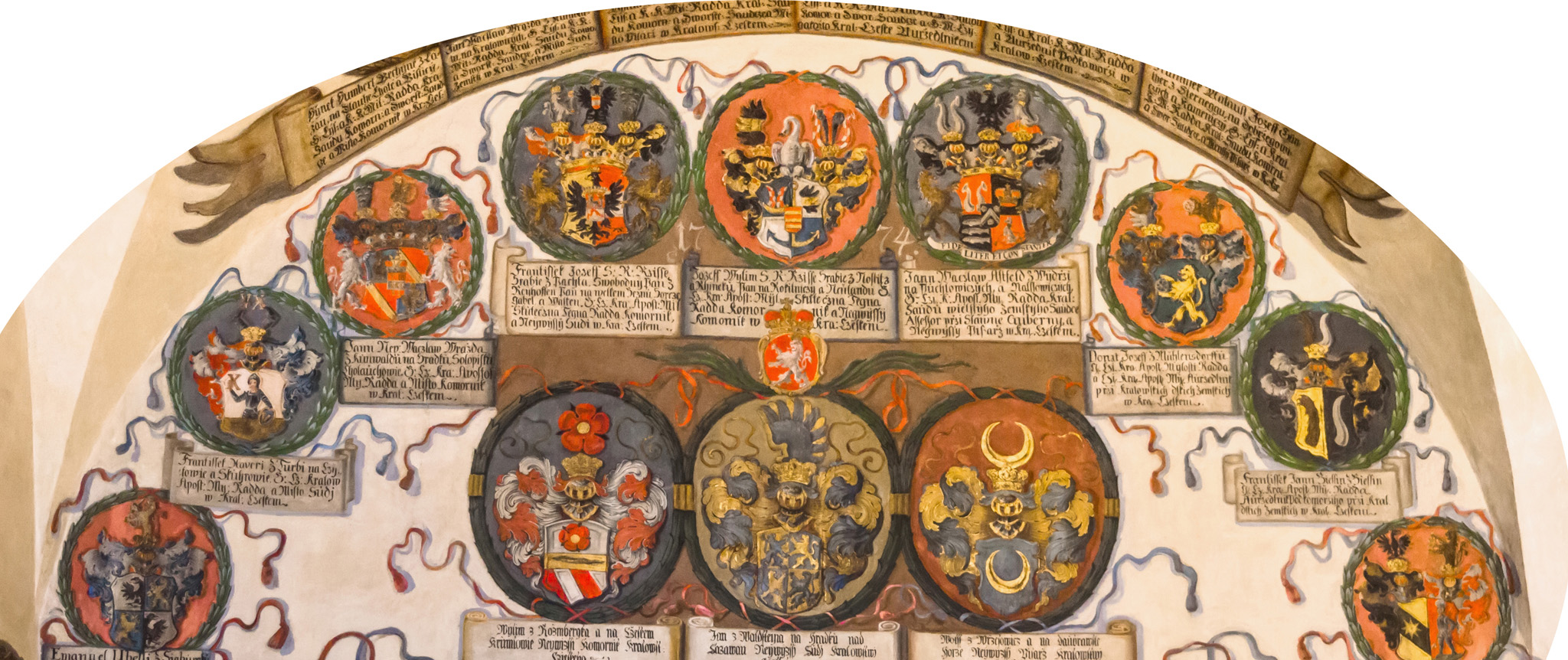
PRAGUE CASTLE
Crowned by St Vitus Cathedral, Prague Castle (Pražský hrad) is the metaphorical and historical throne of the Czech lands. Around AD 880, Prince Bořivoj built a wooden fortress on this hilltop above the river, establishing it as the dynastic base of the Přemyslids. In the 14th century the castle became the seat of the Holy Roman Empire. Much of it was rebuilt by Empress Maria Theresa in the latter half of the 18th century, giving it a formal Neo-Classical look. Today the castle is the official residence of the Czech president.

Prague Castle and the Vltava
NEED TO KNOW
![]() Hradčany • 224 372423, 224 372434 • Adm (various combination tickets available; check on the castle website) • www.hrad.cz
Hradčany • 224 372423, 224 372434 • Adm (various combination tickets available; check on the castle website) • www.hrad.cz
![]() Old Royal Palace, Golden Lane, St George’s Basilica, Rosenberg Palace, Powder Tower, Daliborka Tower & Picture Gallery: open Apr–Oct: 9am–5pm daily; Nov–Mar: 9am–4pm daily
Old Royal Palace, Golden Lane, St George’s Basilica, Rosenberg Palace, Powder Tower, Daliborka Tower & Picture Gallery: open Apr–Oct: 9am–5pm daily; Nov–Mar: 9am–4pm daily
![]() Chapel of the Holy Cross, Great South Tower: open Apr–Oct: 10am–6pm daily (Nov–Mar: until 5pm)
Chapel of the Holy Cross, Great South Tower: open Apr–Oct: 10am–6pm daily (Nov–Mar: until 5pm)
![]() Lobkowicz Palace: open 10am–6pm daily; www.lobkowicz.cz
Lobkowicz Palace: open 10am–6pm daily; www.lobkowicz.cz
![]() Grounds: open 6am–10pm daily
Grounds: open 6am–10pm daily
- The change of guard ceremony happens on the hour and at noon in the first courtyard.

1. Old Royal Palace
While Prince Bořivoj made do with a wooden structure, subsequent residences were built on top of each other as the tastes of Bohemia’s rulers changed. Halls are decorated with coats of arms.

2. South Gardens
Emperor Ferdinand I and his son Maximilian II gave the castle some greenery in the late 16th century, and First Republic architect Josip Plečnik created the lined paths, steps and grottoes that extend to Malá Strana.
3. White Tower
The castle’s White Tower was once used as a prison and torture chamber. Today, shops here sell grisly souvenirs. The gangways from which archers once watched over the moat are lined with replicas of weapons.
4. Lobkowicz Palace
The only privately owned building in the castle complex, this rival to the National Gallery holds works by Bruegel, Canaletto, Dürer, Rubens and Velázquez in its collection.

5. St George’s Convent
Prince Boleslav II, with Princess Mlada, established the first Czech convent for Benedictine nuns here in AD 973. The Romanesque building is not open to the public.
6. St George’s Basilica
Prince Vratislav built the basilica around AD 920. The 13th-century chapel of St Ludmila, St Wenceslas’s grandmother, is decorated with beautiful 16th-century paintings.

7. Chapel of the Holy Cross
Built by the Italian architect Anselmo Lurago in 1763, this chapel houses the Treasure of St Vitus, which includes the sword of St Wenceslas.

8. Rosenberg Palace
This 16th-century palace has had multiple uses during its history: as an 18th-century residence for noblewomen, as part of the Ministry of Internal Affairs of Czechoslovakia and as modern presidential offices.
9. Golden Lane
In order to avoid paying guild dues in town, goldsmiths lived in these colourful little houses that were built into the castle walls.

10. Daliborka Tower
When captured, Dalibor, a Czech Robin Hood figure, became the first prisoner of the tower that now takes his name.
CASTLE GUIDE
Most of the grounds are free to enter, but tickets to see the interiors are sold at the information centres in the second and third courtyards. The shorter circuit takes in Golden Lane, the Old Royal Palace, St George’s Basilica, St Vitus’s and Daliborka Tower; the longer tour circuit adds the Powder Tower and the Rosenberg Palace. Tickets for other castle areas are also available.
